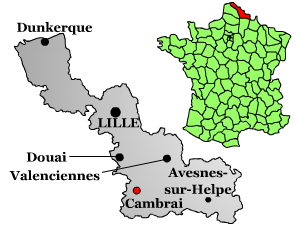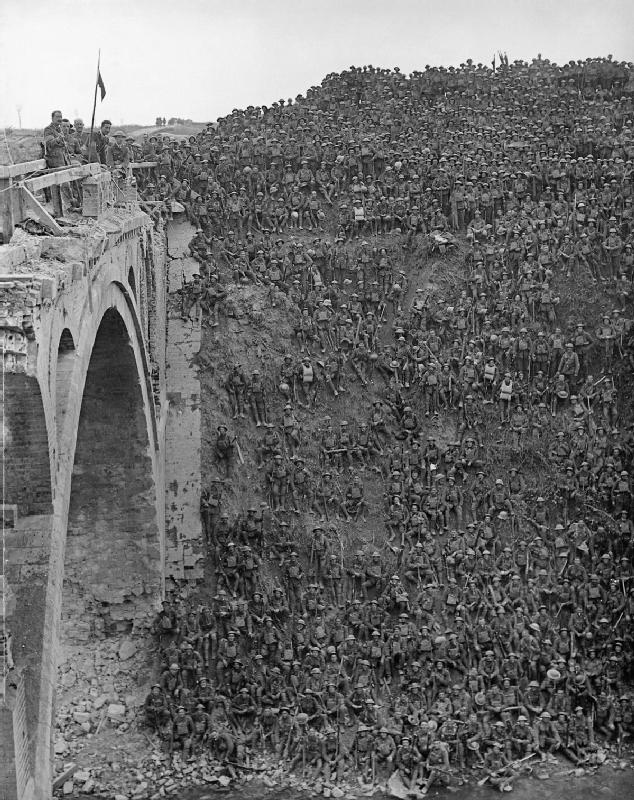|
Bellicourt
Bellicourt () is a commune in the department of Aisne in Hauts-de-France in northern France. It lies on the N44 road between Cambrai and Saint-Quentin and over the principal tunnel of the St. Quentin Canal. It was the site of numerous intense combat actions and battles during World War I. Population See also * Communes of the Aisne department The following is a list of the 799 communes in the French department of Aisne. The communes cooperate in the following intercommunalities (as of 2020):Communes of Aisne Aisne communes articles needing translation from French Wikipedia {{SaintQuentin-geo-stub ... [...More Info...] [...Related Items...] OR: [Wikipedia] [Google] [Baidu] |
Communes Of The Aisne Department
The following is a list of the 799 communes in the French department of Aisne. The communes cooperate in the following intercommunalities (as of 2020):BANATIC Périmètre des EPCI à fiscalité propre. Accessed 3 July 2020. * Communauté d'agglomération Chauny Tergnier La Fère * Communauté d'agglomération du Pays de Laon * [...More Info...] [...Related Items...] OR: [Wikipedia] [Google] [Baidu] |
Communes Of France
The () is a level of administrative division in the French Republic. French are analogous to civil townships and incorporated municipalities in the United States and Canada, ' in Germany, ' in Italy, or ' in Spain. The United Kingdom's equivalent are civil parishes, although some areas, particularly urban areas, are unparished. are based on historical geographic communities or villages and are vested with significant powers to manage the populations and land of the geographic area covered. The are the fourth-level administrative divisions of France. vary widely in size and area, from large sprawling cities with millions of inhabitants like Paris, to small hamlets with only a handful of inhabitants. typically are based on pre-existing villages and facilitate local governance. All have names, but not all named geographic areas or groups of people residing together are ( or ), the difference residing in the lack of administrative powers. Except for the municipal arr ... [...More Info...] [...Related Items...] OR: [Wikipedia] [Google] [Baidu] |
Departments Of France
In the administrative divisions of France, the department (french: département, ) is one of the three levels of government under the national level ("territorial collectivities"), between the administrative regions and the communes. Ninety-six departments are in metropolitan France, and five are overseas departments, which are also classified as overseas regions. Departments are further subdivided into 332 arrondissements, and these are divided into cantons. The last two levels of government have no autonomy; they are the basis of local organisation of police, fire departments and, sometimes, administration of elections. Each department is administered by an elected body called a departmental council ( ing. lur.. From 1800 to April 2015, these were called general councils ( ing. lur.. Each council has a president. Their main areas of responsibility include the management of a number of social and welfare allowances, of junior high school () buildings and technical ... [...More Info...] [...Related Items...] OR: [Wikipedia] [Google] [Baidu] |
Aisne
Aisne ( , ; ; pcd, Ainne) is a French departments of France, department in the Hauts-de-France region of northern France. It is named after the river Aisne (river), Aisne. In 2019, it had a population of 531,345.Populations légales 2019: 02 Aisne INSEE Geography  The department borders Nord (French department), Nord (to the north), Somme (department), Somme and Oise (to the west), Ardennes (department), Ardennes and Marne (department), Marne (east), and Seine-et-Marne (south-west) and Belgium (Province of Hainaut Province, Hainaut) (to the north- ...
The department borders Nord (French department), Nord (to the north), Somme (department), Somme and Oise (to the west), Ardennes (department), Ardennes and Marne (department), Marne (east), and Seine-et-Marne (south-west) and Belgium (Province of Hainaut Province, Hainaut) (to the north- ...
[...More Info...] [...Related Items...] OR: [Wikipedia] [Google] [Baidu] |
Hauts-de-France
Hauts-de-France (; pcd, Heuts-d'Franche; , also ''Upper France'') is the northernmost region of France, created by the territorial reform of French regions in 2014, from a merger of Nord-Pas-de-Calais and Picardy. Its prefecture is Lille. The new region came into existence on 1 January 2016, after regional elections in December 2015. The Conseil d'État approved Hauts-de-France as the name of the region on 28 September 2016, effective the following 30 September. With 6,009,976 inhabitants (as of 1 January 2015) and a population density of 189 inhabitants/km2, it is the third most populous region in France and the second most densely populated in metropolitan France after its southern neighbour Île-de-France. It is bordered by Belgium to the north. Toponymy The region's interim name ''Nord-Pas-de-Calais-Picardie'' was a hyphenated placename, created by hyphenating the merged regions' names—'' Nord-Pas-de-Calais'' and '' Picardie''—in alphabetical order. On 14 March ... [...More Info...] [...Related Items...] OR: [Wikipedia] [Google] [Baidu] |
France
France (), officially the French Republic ( ), is a country primarily located in Western Europe. It also comprises of overseas regions and territories in the Americas and the Atlantic, Pacific and Indian Oceans. Its metropolitan area extends from the Rhine to the Atlantic Ocean and from the Mediterranean Sea to the English Channel and the North Sea; overseas territories include French Guiana in South America, Saint Pierre and Miquelon in the North Atlantic, the French West Indies, and many islands in Oceania and the Indian Ocean. Due to its several coastal territories, France has the largest exclusive economic zone in the world. France borders Belgium, Luxembourg, Germany, Switzerland, Monaco, Italy, Andorra, and Spain in continental Europe, as well as the Netherlands, Suriname, and Brazil in the Americas via its overseas territories in French Guiana and Saint Martin. Its eighteen integral regions (five of which are overseas) span a combined area of ... [...More Info...] [...Related Items...] OR: [Wikipedia] [Google] [Baidu] |
Cambrai
Cambrai (, ; pcd, Kimbré; nl, Kamerijk), formerly Cambray and historically in English Camerick or Camericke, is a city in the Nord department and in the Hauts-de-France region of France on the Scheldt river, which is known locally as the Escaut river. A sub-prefecture of the department, Cambrai is a town which had 32,501 inhabitants in 2018. It is in the heart of the urban unit of Cambrai with 46,772 inhabitants. Its functional area, a more extensive range, included 94,576 inhabitants in 2018.Comparateur de territoire: Aire d'attraction des villes 2020 de Cambrai (108), Unité urbaine 2020 de Cambrai (59403), Commune de Cambrai (59122) INSEE With |
Saint-Quentin, Aisne
Saint-Quentin (; pcd, Saint-Kintin; nl, label=older Dutch, Sint-Kwintens ) is a city in the Aisne department, Hauts-de-France, northern France. It has been identified as the ''Augusta Veromanduorum'' of antiquity. It is named after Saint Quentin of Amiens, who is said to have been martyred there in the 3rd century. Administration Saint-Quentin is a sub-prefecture of Aisne. Although Saint-Quentin is by far the largest city in Aisne, the capital is the third-largest city, Laon. Mayors The mayor of Saint-Quentin is Frédérique Macarez, a member of the centre-right LR Party. History The city was founded by the Romans, in the Augustean period, to replace the ''oppidum'' of Vermand (11 km away) as the capital of '' Viromandui'' (Celtic Belgian people who occupied the region). It received the name "''Augusta Viromanduorum''", ''Augusta'' of the '' Viromandui'', in honor of the emperor Augustus. The site is that of a ford across the River Somme. During the late Roman ... [...More Info...] [...Related Items...] OR: [Wikipedia] [Google] [Baidu] |
Canal De Saint-Quentin
The Canal de Saint-Quentin () is a canal in northern France connecting the canalised river Escaut in Cambrai to the Canal latéral à l'Oise and Canal de l'Oise à l'Aisne in Chauny. History The canal was built in two phases, the second much longer than the first. The king's ministers Colbert and Mazarin had both proposed linking the rivers Oise and Somme in the 17th century and this resulted in the Canal Crozat, or Canal de Picardie, between Chauny and Saint-Simon in 1738. The remainder, connecting the Seine Basin with the Escaut was a lengthy process. The original designer, Devicq in 1727, died in 1742. Little was accomplished until Napoléon demanded that work begin again in 1801. He officiated at the opening in April 1810. The canal was such a success that the locks had to be duplicated throughout in the early 20th century, at the same time deepening the channel, enlarging the tunnels, and increasing water supplies. Later improvements included electric barge traction on ... [...More Info...] [...Related Items...] OR: [Wikipedia] [Google] [Baidu] |
World War I
World War I (28 July 1914 11 November 1918), often abbreviated as WWI, was List of wars and anthropogenic disasters by death toll, one of the deadliest global conflicts in history. Belligerents included much of Europe, the Russian Empire, the United States, and the Ottoman Empire, with fighting occurring throughout Europe, the Middle East, Africa, the Pacific Ocean, Pacific, and parts of Asia. An estimated 9 million soldiers were killed in combat, plus another 23 million wounded, while 5 million civilians died as a result of military action, hunger, and disease. Millions more died in Genocides in history (World War I through World War II), genocides within the Ottoman Empire and in the Spanish flu, 1918 influenza pandemic, which was exacerbated by the movement of combatants during the war. Prior to 1914, the European great powers were divided between the Triple Entente (comprising French Third Republic, France, Russia, and British Empire, Britain) and the Triple A ... [...More Info...] [...Related Items...] OR: [Wikipedia] [Google] [Baidu] |
Communes Of Aisne
An intentional community is a voluntary residential community which is designed to have a high degree of group cohesiveness, social cohesion and teamwork from the start. The members of an intentional community typically hold a common social, political, religious, or Spirituality, spiritual vision, and typically share responsibilities and property. This way of life is sometimes characterized as an "alternative lifestyle". Intentional communities can be seen as social experiments or communal experiments. List of intentional communities, The multitude of intentional communities includes collective households, cohousing communities, coliving, ecovillages, monasteries, Retreat (survivalism), survivalist retreats, kibbutzim, hutterites, ashrams, and housing cooperatives. History Ashrams are likely the earliest intentional communities founded around 1500 BCE, while Buddhist monasticism, Buddhist monasteries appeared around 500 BCE. Pythagoras founded an intellectual vegetarian com ... [...More Info...] [...Related Items...] OR: [Wikipedia] [Google] [Baidu] |


